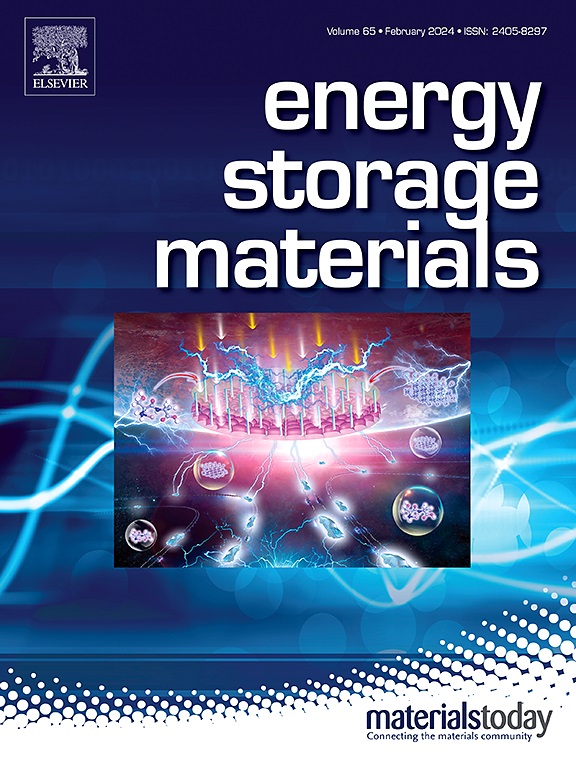基于机器学习的镁-空气水电池高效电解质添加剂的发现
IF 20.2
1区 材料科学
Q1 CHEMISTRY, PHYSICAL
引用次数: 0
摘要
除合金化外,电解质添加剂已成为克服寄生阳极氢进化反应和镁基阳极有害沉积层形成的有效策略,从而改善镁-空气电池的放电性能。然而,由于潜在的候选添加剂数量众多,通过实验测试发现合适的电解质添加剂既耗时又耗力。我们最近开发的基于机器学习的自适应设计在这项工作中得到了反复应用。在此基础上,我们发现了电解质添加剂 2,3-二羟基萘,它能在实验室制造的(Mg-0.2Ca)-空气电池中实现 1.82 V 的电池电压和 83% 的阳极利用效率,产生 3.37k Wh kg-1 的比能量。这是迄今报道的所有镁-空气电池中记录的最高值。这些结果凸显了在机器学习指导下发现高效电解质添加剂的巨大潜力,将进一步推动高能量密度镁-空气电池的尖端发展。本文章由计算机程序翻译,如有差异,请以英文原文为准。


Machine learning-guided discovery of high-efficiency electrolyte additives for aqueous magnesium-air batteries
Besides alloying, electrolyte additives have emerged as an effective strategy to overcome parasitic anodic hydrogen evolution reactions, and the formation of detrimental deposit layers at Mg-based anodes, thus improving the discharge behavior of Mg-air batteries. However, discovering suitable electrolyte additives through experimental testing is time-consuming and labor-intensive, given their high number of potential candidates. Our recently developed machine learning-based adaptive design was used iteratively in this work. Based on this, electrolyte additive 2,3-dihydroxynaphthalene was discovered, which achieved in a lab-made (Mg-0.2Ca)-air battery a cell voltage of 1.82 V and anodic utilization efficiency of 83 %, yielding a specific energy of 3.37 k Wh kg−1. This represents the highest recorded value among all Mg-air batteries reported to date. The results highlight the high potential of machine learning-guided discovery of high-efficiency electrolyte additives to further push the cutting-edge development of high-energy-density Mg-air batteries.
求助全文
通过发布文献求助,成功后即可免费获取论文全文。
去求助
来源期刊

Energy Storage Materials
Materials Science-General Materials Science
CiteScore
33.00
自引率
5.90%
发文量
652
审稿时长
27 days
期刊介绍:
Energy Storage Materials is a global interdisciplinary journal dedicated to sharing scientific and technological advancements in materials and devices for advanced energy storage and related energy conversion, such as in metal-O2 batteries. The journal features comprehensive research articles, including full papers and short communications, as well as authoritative feature articles and reviews by leading experts in the field.
Energy Storage Materials covers a wide range of topics, including the synthesis, fabrication, structure, properties, performance, and technological applications of energy storage materials. Additionally, the journal explores strategies, policies, and developments in the field of energy storage materials and devices for sustainable energy.
Published papers are selected based on their scientific and technological significance, their ability to provide valuable new knowledge, and their relevance to the international research community.
 求助内容:
求助内容: 应助结果提醒方式:
应助结果提醒方式:


